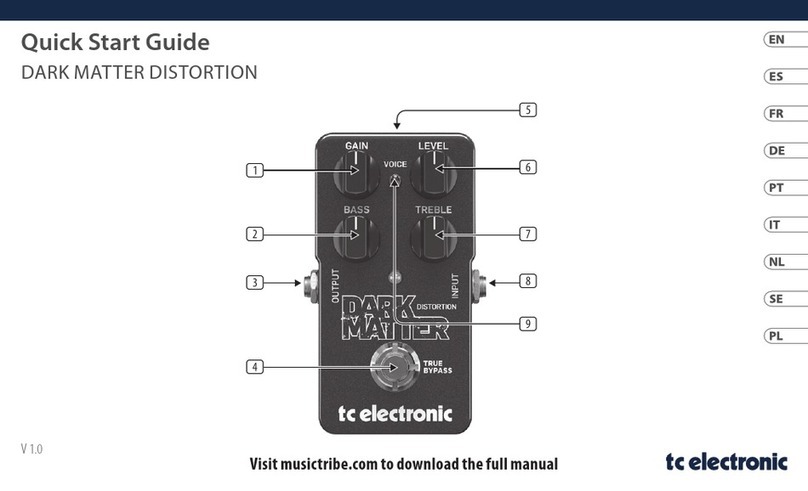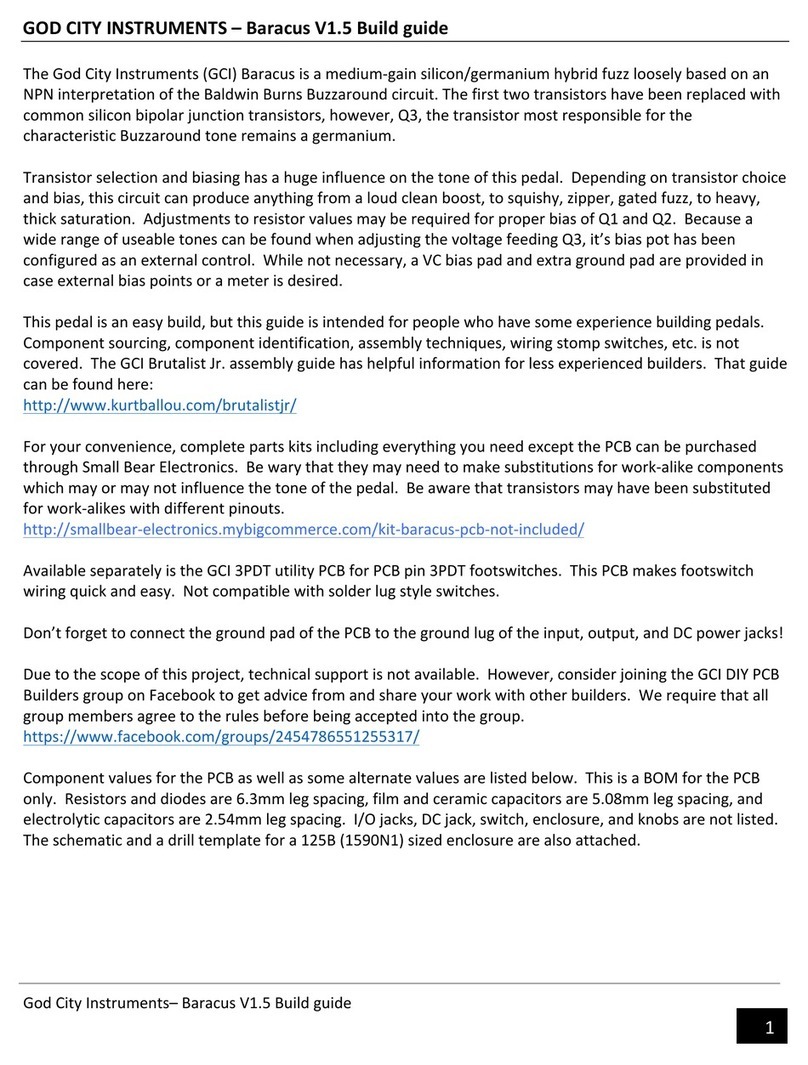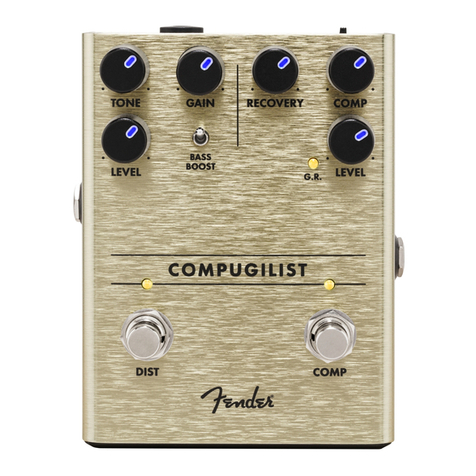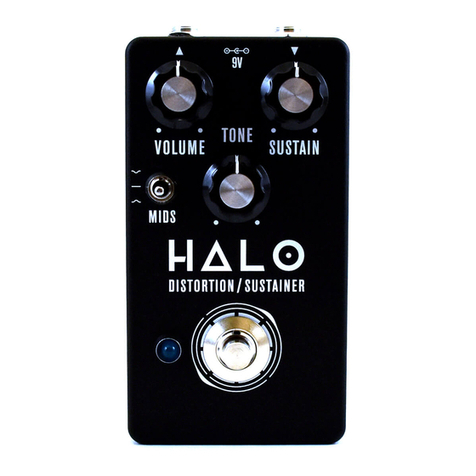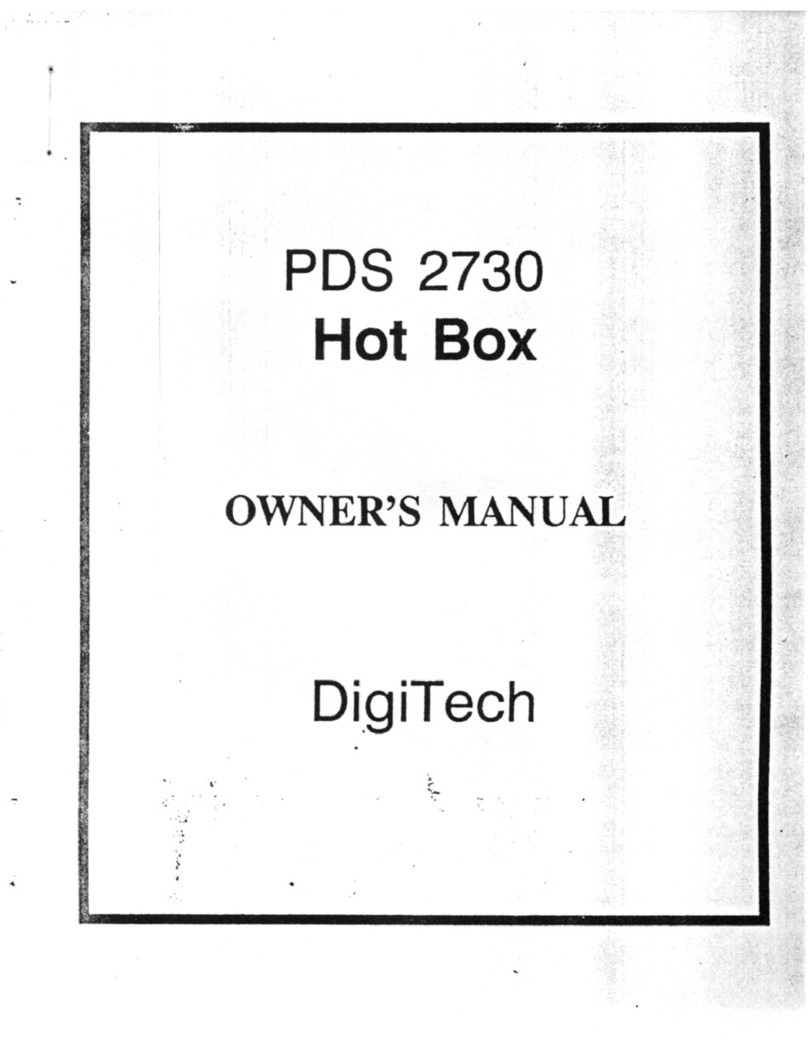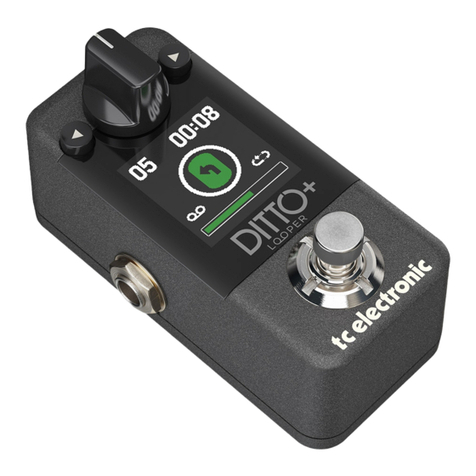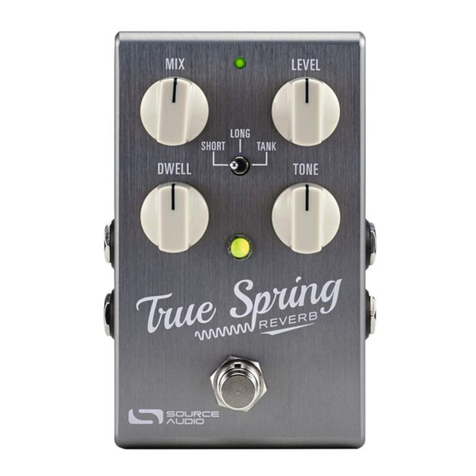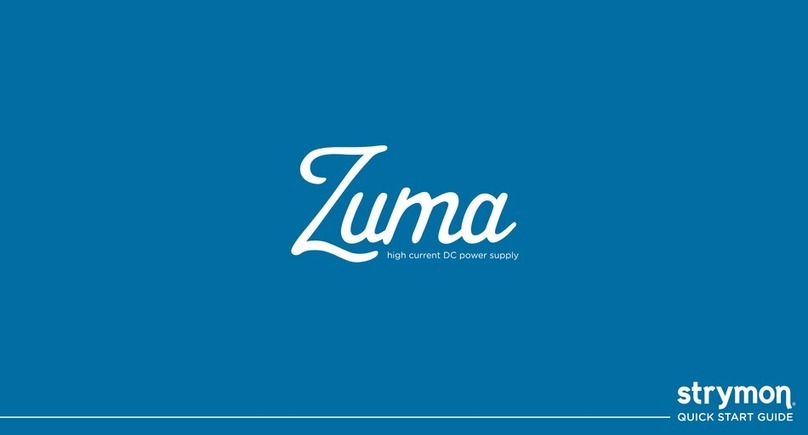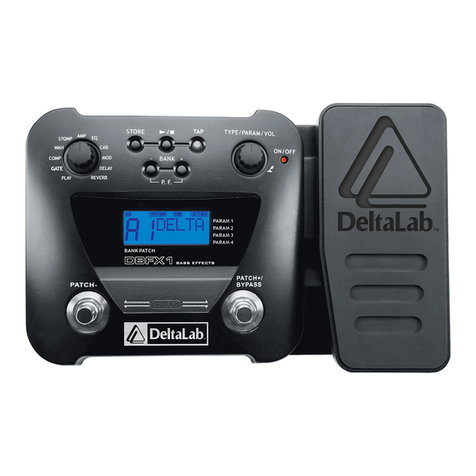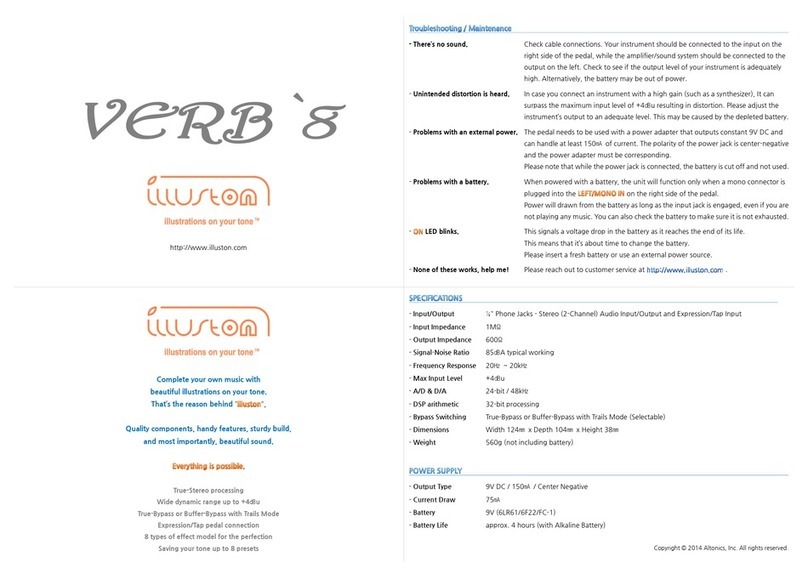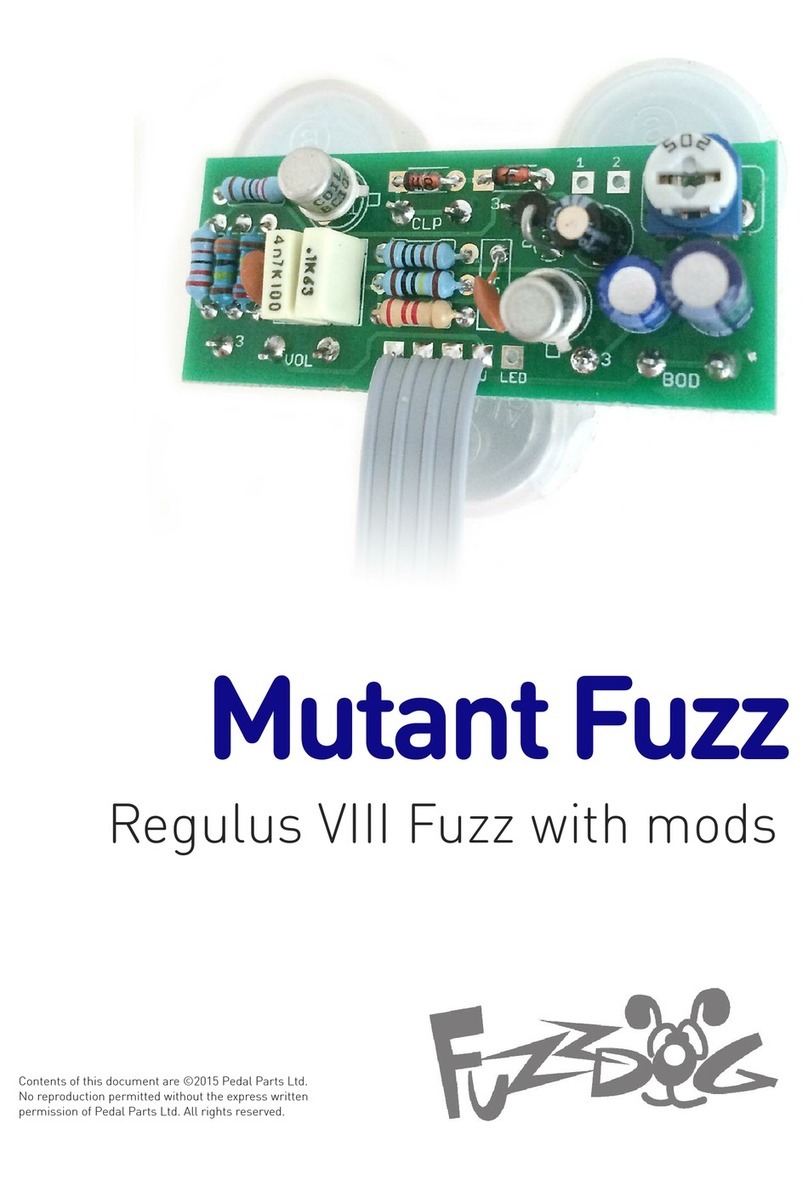Neunaber Wet User manual

Wet™ Stereo Reverb Pedal
Chroma™ Stereo Chorus Pedal
Echelon™ Stereo Echo Pedal
User Guide
Introduction
Thank you for purchasin a Stereo Pedal from Neunaber Technolo y. We really mean it. We value that you have
placed your trust in our product, often based solely on what you see and hear on the internet. We hope to earn that
trust by deliverin a quality product that inspires you to make better music.
You may be wonderin why all the Stereo Pedals share the same User Guide. These pedals all share the same
hardware platform and actually have many common features. You may also use Pedal Customizer™ software to
transform the functionality of any Stereo Pedal into any other Stereo Pedal, simply by chan in its firmware (internal
pro ram).
We do not ship paper User Guides with our products. We feel this wastes paper, when the same information is
available here. Also, we update this User Guide from time to time and want you to have the most current version. If
you would like a hard copy, you may use the link at the bottom of this pa e to print this User Guide.
Power
The power jack accepts a standard center-ne ative pedal power adapter (not included). The power adapter must be 9
-12V and capable of supplyin at least 100 mA. Here is a list of recommended adapters.
If you are usin a daisy-chain cable to power multiple pedals, the total of all the pedals' current (mA) ratin s should
be less than the current ratin of the adapter.
Input
The input jacks accept input directly from your instrument or amplifier effects loop output. The very hi h-impedance
inputs will not present any si nificant tone-chan in load to the si nals that drive them.
The input jacks are capable of acceptin several combinations of inputs:
•Input 1 only will accept a mono input—direct from your instrument, another pedal or instrument-level effects
loop.
•Both Inputs 1 & 2 will accept a stereo input—from another stereo pedal or instrument-level effects loop.
•Input 2 only will accept a stereo TRS input when Input 1 is unplu ed.
Output
The output jacks provide output to another effects pedal, amplifier input or effects loop input. This low-impedance
buffered outputs are capable of drivin lon cables without a chan e in tone. If plu in into the input of your amp,
you should use the low impedance (Lo-Z) input if available.
The output jacks are also capable of several combinations independently of the input jacks:
•Output 1 only will supply a mono output to your amp, another pedal, or instrument-level effects loop. Stereo
inputs will be summed to Output 1 if Output 2 is unplu ed.
•Both Outputs 1 & 2 will supply a stereo output to a stereo amp, pedal or instrument-level effects loop. Usin
both outputs will create a stereo si nal from a mono input.
•Output 2 only will supply a stereo TRS output when Output 1 is unplu ed.
Since the input and output connection are independent, you may—for example—plu in a mono input with stereo
outputs or stereo inputs with a stereo TRS output.
Mono Effect on Stereo Outputs
If you wish for the stereo outputs to have identical (mono) effect si nals, repro ram your pedal usin Pedal
Customizer software and select the Menu →Force Mono option. This is useful for
• drivin a mono output to two different places: for example, one to an amp and the other direct to a mixin
console
• place a mono effect on a stereo input si nal: for example, a mono delay after a stereo chorus
Pagina 1 van 4

100% Wet Sign l with Mono In/Out
The pedal can be "hacked" to drive a 100% wet si nal output for a mono si nal:
• In Pedal Customizer™, select Menu→Force Mono.
• Select your preferred effect and repro ram the pedal.
• Plu the mono input into Input 2. Do not plu into Input 1.
• Plu the mono output into Output 1.
• Insert a dummy plu into Output 2.
• The Mix control will function as effect level. For a parallel loop, turn this to maximum.
Expression Inputs
The Expression Inputs may be used individually or simultaneously.
Each Expression Input controls the function of the knob nearest to it. When the Expression Input is plu ed in, the
knob determines the maximum ran e for the expression pedal. The minimum ran e is typically set on the expression
pedal itself (except for the Moo EP-2, whose knob controls the maximum).
Each Expression Input accepts a 3.5mm TRS (tip-rin -sleeve) plu . Most expression pedals (treadles) have a
1/4" (6.35mm) TRS plu , so you will need an adapter cable. Any standard 1/4"-to-3.5mm TRS adapter cable will
work, but we offer an Expression Input Adapter Cable specifically desi ned for this purpose. Usin this adapter, the
Expression Inputs have been tested to work with followin treadles:
• Mission En ineerin EP-1 (note: requires a 1/4" TRS cable, not included)
• Roland EV-5
• M-Audio EX-P
• Moo EP-2 (does not have a control for the minimum value)
Here is more information on buildin a custom expression controller.
(Echelon™ Only) The µTap Tempo pedal plu s into the Expression Input for the Time knob. Only the µTap™ will work
with the Echelon™ as a tap tempo controller.
USB J ck
The USB Jack is used with Pedal Customizer™ software.
Mix Control
The Mix knob controls the effect level. Full counter-clockwise is 100% dry, while full clockwise is maximum effect
level. The maximum effect level is approximately equal to the level of the dry si nal. The level of the dry si nal is
always unity (it does not chan e with the Mix knob).
Depth Control (Wet™ only)
The Depth knob controls the decay time, or the len th of the reverb tail.
Width Control (Chrom ™ only)
The Width knob controls the amount of pitch transposition.
Time Control (Echelon™ only)
The Time knob controls the delay time. Due to tolerance variations, the marks around the knob are approximate.
Without the µTap Tempo pedal, the delay time is set directly usin the knob. The marks around the knob indicate the
time in fractions of 1 second:
• 1 = 1 second, or 1000 ms
• 3/4 = 750 ms
• 1/2 = 500 ms
• 1/3 = 333 ms
• 1/4 = 250 ms
• 1/6 = 167 ms
• any other position to achieve your desired delay time
When usin the µTap Tempo pedal, the marks around the Time knob indicate the time in fractions of the tapped
(quarter-note) tempo:
• 1 = quarter note
• 3/4 = dotted 8th note
• 1/2 = 8th note
• 1/3 = 8th-note triplet
• 1/4 = 16th note
• 1/6 = 16th-note triplet
• any other position to achieve an "unusual" subdivision
Δ Knob (may chan e usin Pedal Customizer™ software):
• Wet™: reverb tone
Pagina 2 van 4

• Chroma™: chorus si nal re eneration or tone
• Echelon™: echo repeats
Byp ss Foot Switch
The foot switch bypasses the effect and is equivalent to turnin the Mix knob to zero. The bypass is buffered, which
eliminates the tone chan e that can be caused by some bypassin schemes.
The LED li hts when the effect is active.
Bypassin the effect does not si nificantly chan e the power consumption, as it does not turn off power to the pedal.
(Wet™ only) Your pedal may be updated usin Pedal Customizer™ software to select between "trails" or normal
bypass. Trails bypass allows the reverb to "trail" off naturally after bypassin the effect.
Effect Pl cement
Delay-based effects such as chorus, delay and reverb work best when placed at the end of the si nal chain. The
preferred orderin is (other pedals)→chorus→delay→reverb→amplifier. If you are usin the distortion in your
amplifier, these pedals should be placed in the effects loop.
Troubleshooting
In rare cases, pedals before your stereo pedal (particularly true bypass pedals) may pop when bypassed until all the
pedals' volta es have reached equilibrium. Simply wait a while, and any noise should o away.
Sign l Flow & Routing
This simplified dia ram illustrates the si nal flow throu h the Stereo Pedal:
• Both Inputs and Outputs are buffered.
• When Input 2 is unplu ed, both input buffers are driven by Input 1.
• When Output 2 is unplu ed, both output buffers passively sum to Output 1. In this case, the effect processor
knows to drive a mono si nal to both of its outputs.
• The two inputs passively sum to the input of the effect processor. Therefore, if Input 2 is not driven with si nal,
it should be unplu ed.
• Likewise, if Output 2 is not used, it should be unplu ed. Otherwise, you will only hear half of a stereo output,
which is not the same as a mono output.
• For clarity, the TRS routin for Input 2 and Output 2 is not shown. If the TRS (#2) Input is used, Input 1 must
be unplu ed. Likewise, if the TRS (#2) Output is used, Output 1 must be unplu ed.
• As shown by the dia ram, the two wet si nals are not independent. Therefore, the Stereo Pedal cannot be used
as two discrete mono pedals.
Specific tions
Electric l
Nominal Input Level -10 dBV, instrument level
Max Input Level 6 Vpk-pk
Input Impedance 2.0M Ω stereo, 1.0M Ω mono
Output Impedance 1K Ω stereo, 500 Ω mono
Gain 0 dB, 0% Mix vs. bypass
Frequency Response 20 Hz—20k Hz, +0.0/-0.5 dB
(dry si nal or bypassed)
Total Harmonic Distortion
+ Noise
0.003% typical, 22Hz—22k Hz
(dry si nal or bypassed, input: 1.0 VRMS @ 1k Hz)
Si nal-to-Noise Ratio 105 dB typical, A-wei hted, 22 Hz—22k Hz
(knobs @ 50%, 2 VRMS reference)
Power
Volta e 9-12 V DC
Current 100 mA
Pagina 3 van 4

Power Adapter center ne ative, 5.5 mm OD x 2.1 mm ID
Physic l
Dimensions 2.8" W, 4.6" L, 1.6"H / 72 mm W, 116 mm L, 49 mm H
Wei ht 8 oz (220 )
*Specifications subject to chan e without notice.
This device complies with part 15 of the FCC Rules. Operation is su ject to the following two conditions: (1) This
device may not cause harmful interference, and (2) this device must accept any interference received, including
interference that may cause undesired operation.
Pagina 4 van 4
This manual suits for next models
2
Table of contents
Other Neunaber Music Pedal manuals
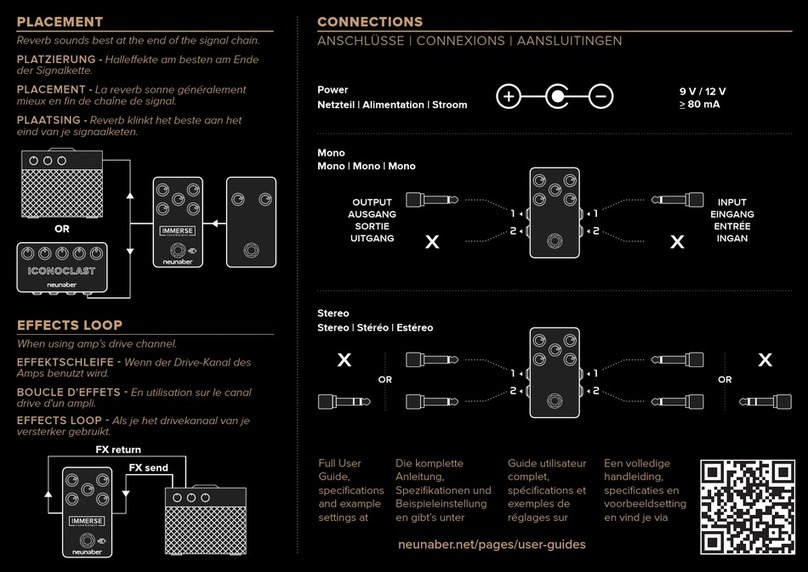
Neunaber
Neunaber Immerse Mk II User manual

Neunaber
Neunaber Immerse Mk II User manual
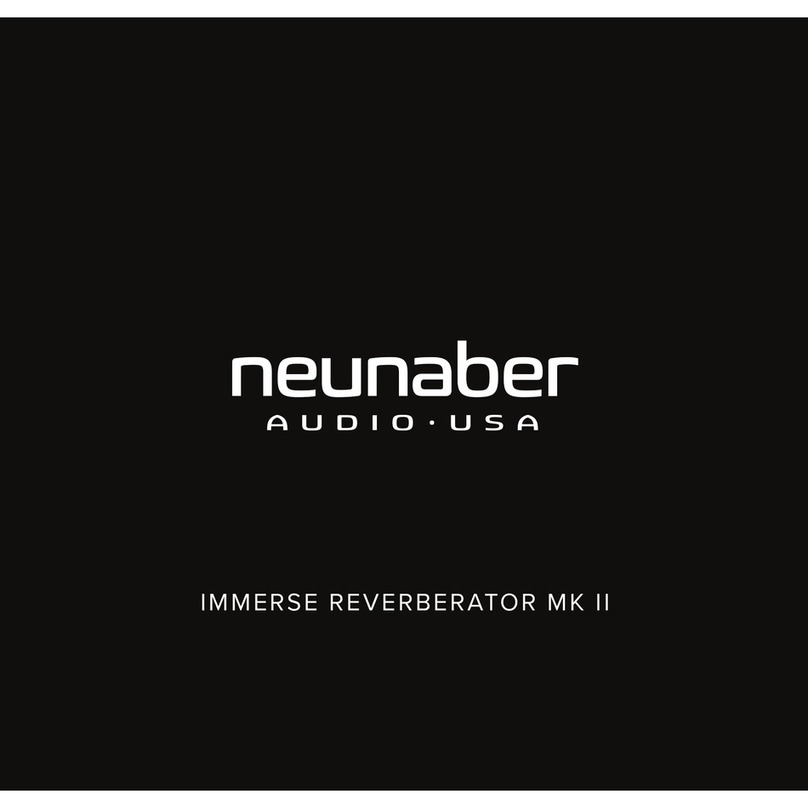
Neunaber
Neunaber IMMERSE REVERBERATOR MK II User manual

Neunaber
Neunaber NEURON User manual

Neunaber
Neunaber SERAPHIM shimmer User manual
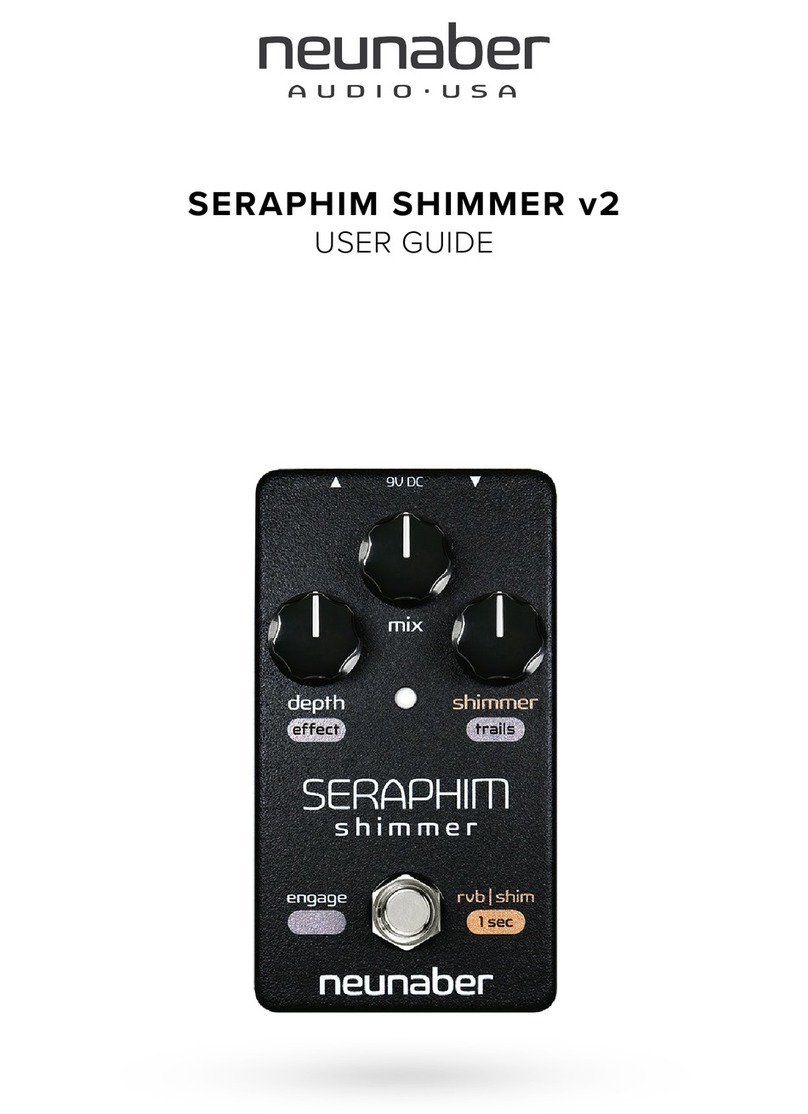
Neunaber
Neunaber SERAPHIM SHIMMER v2 User manual
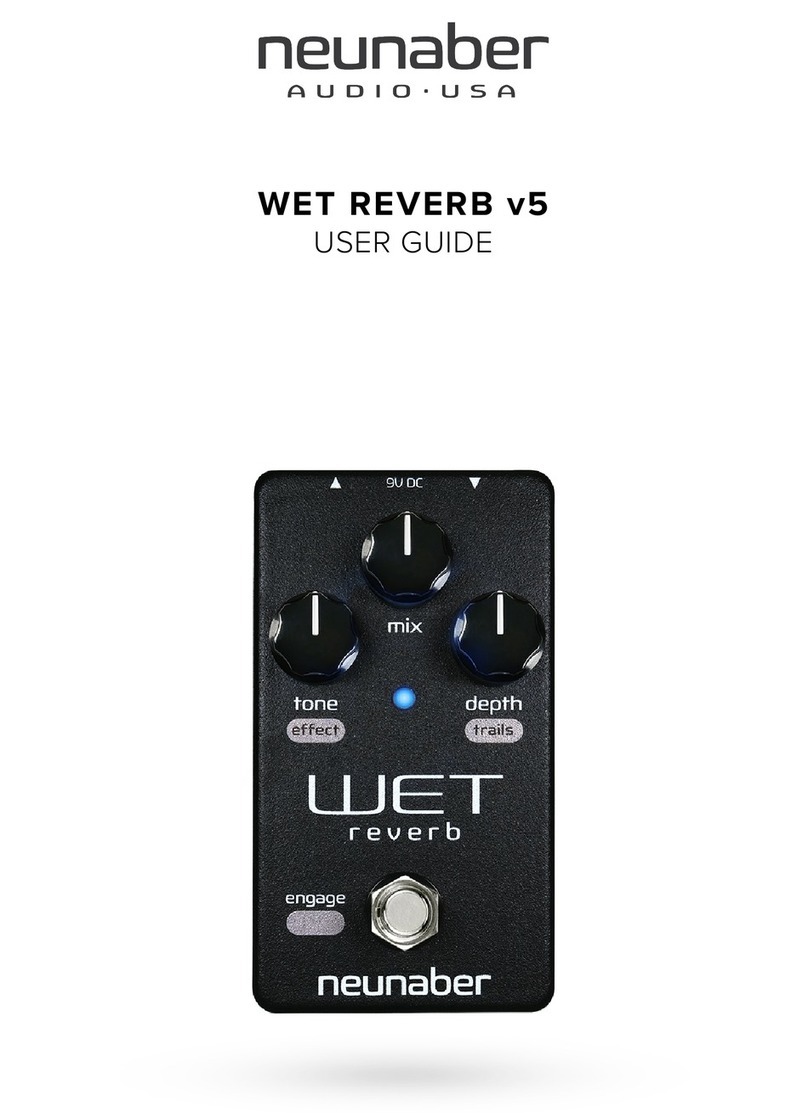
Neunaber
Neunaber WET REVERB v5 User manual
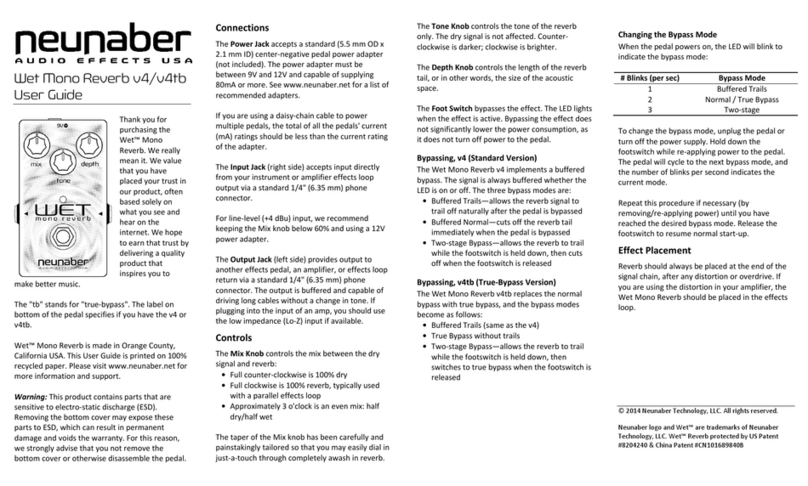
Neunaber
Neunaber Wet v4 User manual
Neunaber
Neunaber ICONOCLAST User manual
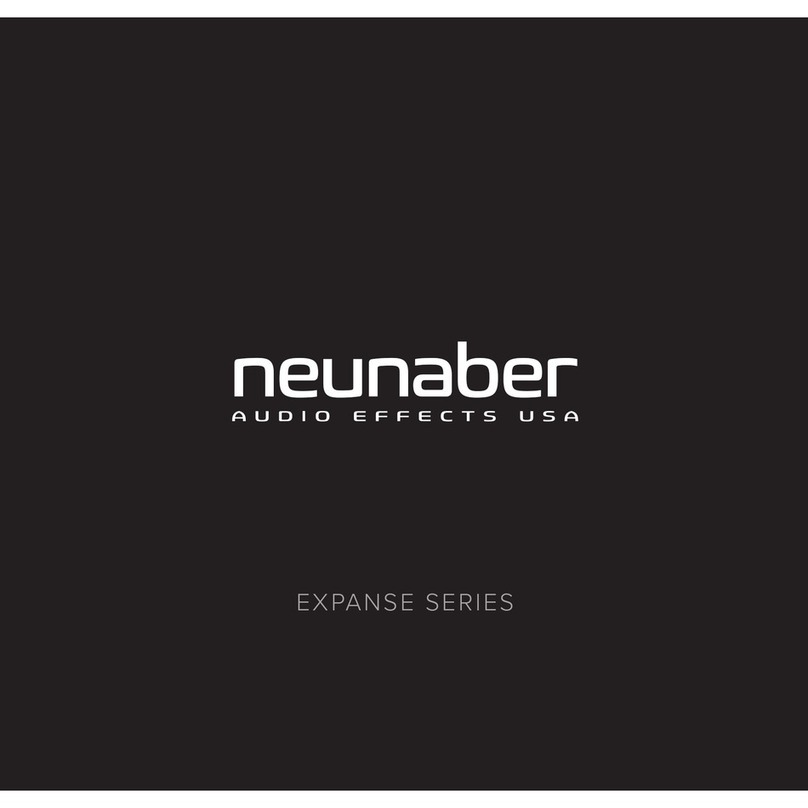
Neunaber
Neunaber Expanse Series User manual
